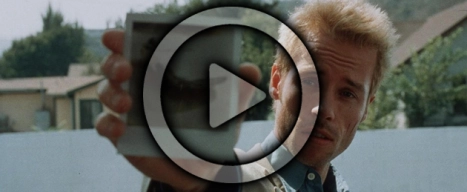This Saturday, I’ll be discussing The Sixth Sense on The 250, the weekly podcast that I co-host discussing the IMDb’s Top 250 Movies of All-Time. However, I had some thoughts on the film that I wanted to jot down first.
What do you think these ghosts want when they talk to you? I want you to think about it, Cole. I want you to think about it really carefully. What do you think they want?
Just help.
That’s right. That’s what I think too. They just want help, even the scary ones. I think I might know a way to make them go away.
How?
Listen to them.
The Sixth Sense is a remarkable film, for many reasons.
These days, The Sixth Sense is perhaps best known for its central twist. The film’s powerhouse emotional ending has become a pop cultural touchstone, anchoring jokes in everything from Fifty First Dates to the viral video sensation Jizz in my Pants. Of course, this also complicates the legacy of The Sixth Sense by serving as ground zero for director M. Night Shyamalan’s subsequent dependence upon these sorts of twists in movies like The Village or The Happening. Nevertheless, The Sixth Sense has endured in the popular memory as one of the rare twist-driven films that stands up to repeat viewings.

A Cole’d open.
However, it is much more than that. Even beyond that, The Sixth Sense is a lavish production that looks beautiful. Of course, Shyamalan’s ego has done his reputations few favours, from his own cameo as a writer-messiah in The Lady in the Water to his role in a Sci-Fi Channel documentary The Buried Secret of M. Night Shyamalan to the famous Newsweek cover crowning him “the next Spielberg.” Still, The Sixth Sense is visually stunning. Although it is tempting to think of The Sixth Sense as a “small” movie by modern standards, it was actually produced on a budget of $40m.
Rewatching The Sixth Sense twenty years later, it is amazing how much of the film’s visual storytelling lingers. Shyamalan might not have been the next Spielberg, but he had a wonderful eye for composition; that shot of a red balloon drifting up the inside of a spiral staircase, those eerie sequences of Malcolm and Cole wandering through a surprisingly quiet Philadelphia, even the conversations at that church with Cole towering over Malcolm from the balcony as he plays with his toy soldiers.

Pew pew!
However, even more than all of that, The Sixth Sense remains the rare film that is both specifically rooted in its cultural moment and profoundly universal. The story that drives The Sixth Sense is surprisingly straightforward – helpfully encapsulated in Cole’s trailer-friendly assertion that he sees “dead people.” However, Shyamalan understands that ghost stories are about more than just the recently deceased. Ghost stories translate a sense of longing and regret, of disconnect and isolation. The Sixth Sense is fundamentally a story about how difficult it is to meaningfully communicate in the modern world, with or without a pulse.
The Sixth Sense is a story of existential ennui, wrapped up in a set of late nineties anxieties.

M. Night Shyamalan had to eat Crowe on his next few films.
Continue reading →
Filed under: On Second Thought | Tagged: alienation, bruce willis, cole sear, Dark City, divorce, existential ennui, family breakdown, Haley Joel Osment, isolation, m. night shymalan, nineties, reality, the matrix, the sixth sense, the truman show | 2 Comments »
































